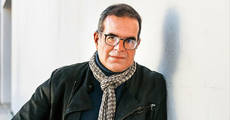Raul Ferrão
Musicians - Last Updated Fevereiro 23, 2022

 He spent his childhood in Lisbon and Aveiro, joining Colégio Militar
(1901), where he learned to play mandolin in the musical group (tuna) of
that institution.
He spent his childhood in Lisbon and Aveiro, joining Colégio Militar
(1901), where he learned to play mandolin in the musical group (tuna) of
that institution.
He followed, like his father, his military career, having completed the Army School (1914), where he was an auxiliary teacher, also participated in World War I (Angola, until 1917). He moved to the reserve in the late 1940s and subsequently was a professor of Machine Organs and Metal-Mechanics at the Army Pupils Institute. Alongside his military career, he took a course in Industrial Chemical Engineering at the Instituto Superior Técnico and served as commander of the Shotgun Workshop at the Fábrica de Braço de Prata and as a representative of the Armed Forces at industrial fairs held abroad.
His first marriage would have been important for his musical career, since his wife (Lídia Esperança da Silva Azinhais Ferrão), piano teacher, advised him in the composition process. In 1923, he began his career as a theater composer, writing songs for variety shows presented at Salão Foz (A Cantarinha, e.o.) and in other theaters (PomPom, 1926). In partnership with writer Álvaro Leal and Angel Goméz (who taught him orchestration), he started writing for operetta and revista theater (c. 120 well-known revistas). A few years later, he was one of the most requested composers to write sketches for this genre, an activity that he maintained almost until his death.
In partnership with several composers and writers, such as Raul Portela and Frederico Valério, Fernando de Carvalho, José Galhardo and Alberto Barbosa, he composed music for some of the most commercially successful revistas presented in Lisbon (A rambóia, 1928; O mexilhão, 1931; Pernas ao léu, 1934; Arre burro!, 1936; Lá vai Lisboa, 1939; A marcha de Lisboa, 1941; Alto lá com o charuto, 1945, e.o.).
From 1935, in partnership with lyricist Norberto Araújo, he established himself as one of the main composers of popular marches (in which he rehearsed and directed the cavalinhos), having written originals and, sometimes, revista theater arrangements for that event.
From the 1930s, with the advent of sound cinema, he began composing for films (Canção de Lisboa, 1933; Maria Papoila, 1937; Rosa Engeitada, 1937; Aldeia da Roupa Branca, 1938; Varanda dos Rouxinóis, 1939; Capas Negras , 1947, for which he wrote one of the most popular songs inside and outside the country: Coimbra (April in Portugal), performed by Amália Rodrigues; Sol e Toiros, 1949).
He was co-founder and vice president (1925-1952) of the Sociedade dos Escritores e Compositores Teatrais (later the Sociedade Portuguesa de Autores).
Some of the interpreters who released his music were Alberto Ribeiro, Beatriz Costa and Hermínia Silva. He was one of the composers who contributed most to the configuration and dissemination of “fado-song”. He preferred forms with a chorus, developing fluid and easily memorable melodies with conventional harmonic support (tonic-subdominant-dominant), denoting a clear influence of military music.
He received several distinctions as a military man, but none as a composer.
His first marriage would have been important for his musical career, since his wife (Lídia Esperança da Silva Azinhais Ferrão), piano teacher, advised him in the composition process. In 1923, he began his career as a theater composer, writing songs for variety shows presented at Salão Foz (A Cantarinha, e.o.) and in other theaters (PomPom, 1926). In partnership with writer Álvaro Leal and Angel Goméz (who taught him orchestration), he started writing for operetta and revista theater (c. 120 well-known revistas). A few years later, he was one of the most requested composers to write sketches for this genre, an activity that he maintained almost until his death.
In partnership with several composers and writers, such as Raul Portela and Frederico Valério, Fernando de Carvalho, José Galhardo and Alberto Barbosa, he composed music for some of the most commercially successful revistas presented in Lisbon (A rambóia, 1928; O mexilhão, 1931; Pernas ao léu, 1934; Arre burro!, 1936; Lá vai Lisboa, 1939; A marcha de Lisboa, 1941; Alto lá com o charuto, 1945, e.o.).
From 1935, in partnership with lyricist Norberto Araújo, he established himself as one of the main composers of popular marches (in which he rehearsed and directed the cavalinhos), having written originals and, sometimes, revista theater arrangements for that event.
From the 1930s, with the advent of sound cinema, he began composing for films (Canção de Lisboa, 1933; Maria Papoila, 1937; Rosa Engeitada, 1937; Aldeia da Roupa Branca, 1938; Varanda dos Rouxinóis, 1939; Capas Negras , 1947, for which he wrote one of the most popular songs inside and outside the country: Coimbra (April in Portugal), performed by Amália Rodrigues; Sol e Toiros, 1949).
He was co-founder and vice president (1925-1952) of the Sociedade dos Escritores e Compositores Teatrais (later the Sociedade Portuguesa de Autores).
Some of the interpreters who released his music were Alberto Ribeiro, Beatriz Costa and Hermínia Silva. He was one of the composers who contributed most to the configuration and dissemination of “fado-song”. He preferred forms with a chorus, developing fluid and easily memorable melodies with conventional harmonic support (tonic-subdominant-dominant), denoting a clear influence of military music.
He received several distinctions as a military man, but none as a composer.
Related Articles
Add Comment









